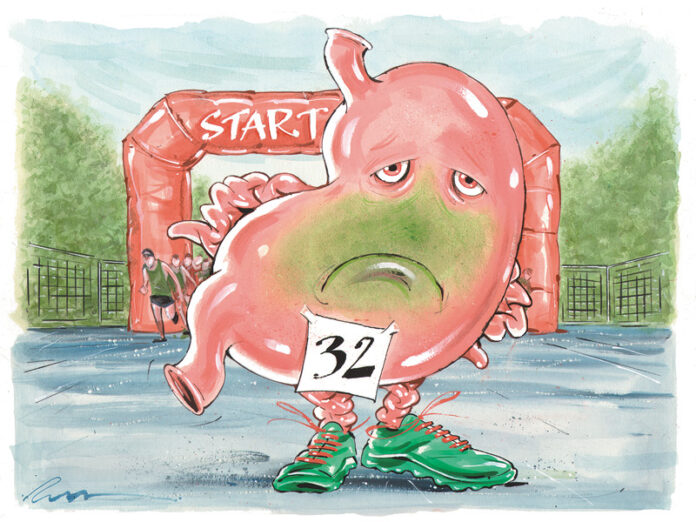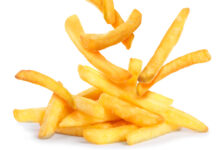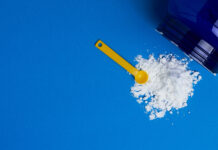
Whether you’re a runner, a gym-goer, or a group exercise enthusiast, I’ll bet you’ve had a couple of experiences with a less-than-happy tummy during a workout or race.
Exercise puts the body under physical stress and sometimes that can mean dealing with cramps, stomach pains, bloating and yes, runner’s trots. What you eat before training or racing makes a difference. Your muscles start working as your body gets moving and blood flow that was once going to your stomach for digestion gets diverted to those demanding muscles. As a result, food in your stomach sits like a rock and that can be really uncomfortable.
What’s a sweat-loving endorphin junkie with a season of races ahead to do? Here are four tried and tested ways to avoid GI issues.
1. Get probiotics
More than 70 per cent of your body’s immune cells are in the gut. Without a healthy gut microbiome, you could be eating a super nutrient-dense diet, but your body might not be absorbing all those nutrients. Nourishing the gut’s good bacteria with probiotics is an easy way to improve this.
Look for a high-strain probiotic supplement or get your daily dose by enjoying foods such as:
- Kefir, a fermented dairy product that tastes a bit like tangy yogurt.
- Sauerkraut, kimchi, or other fermented vegetables
- Fermented soy products like miso (a salty soybean paste) and tempeh.
- Yogurt – but read the label and steer clear of sugar, dyes and other artificial ingredients.
2. Record what you eat
Log your food before and during workouts, noting how your body reacts. When you start practicing your race nutrition, write down what you eat before, during and after training. Use all this information to inform your race-day fueling strategy.
3. Trigger foods
You probably know foods that don’t agree with you, however, there are a few known culprits when it comes to foods that trigger GI distress. These include:
- Cruciferous vegetables: Broccoli, cauliflower, kale, Brussels sprouts, cabbage, turnips, collard greens, bok choy and radishes are all high in sulphur. While these foods are super nutritious, they produce hydrogen sulfide gas when broken down in the large intestine. Gas leads to discomfort you don’t want while training and racing.
- Artificial sweeteners. Chemicals like sorbitol can’t be digested and have no nutritional value. Therefore, the body responds by getting them out ASAP.
- Fructose: Fructose is found naturally in dried fruits, grapes, apples, cherries, kiwis and blackberries and can be problematic for some people. If that includes you, check your gels and sports drinks to ensure fructose isn’t one of the sugar sources.
- Beans and whole grains: Fibre is an important part of every diet and is key for healthy digestion, but beans have earned their gassy reputation for a reason. As for grains, they contain soluble and insoluble fibre. The latter does not dissolve in water. It takes more work to digest. This is normally good because high-fibre meals can help to keep us feeling satisfied for longer. But be careful before workouts: You don’t want energy being used to break down fibre when your muscles need it to set a new PR!
4. Get your timing right
I prefer morning workouts because I don’t have a full day’s food in me. If you train after work, experiment with meals until you find the timing and ingredients that work best for you. Try a 200-300 calorie snack around 3 p.m. or a simple carbohydrate source, such as a banana, at 4:30 p.m. An hour later, you’ll be fuelled and ready to go.
















